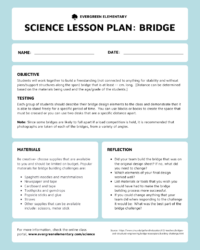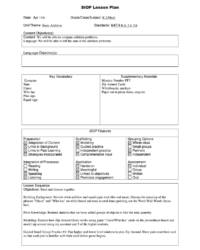Teaching a language effectively often hinges on providing students with abundant comprehensible input, which simply means language they can understand, even if they don’t know every single word. It’s the cornerstone of natural language acquisition, mimicking how we learn our first language by being exposed to messages that make sense. For many educators, translating this philosophy into daily classroom practice can feel like an art rather than a science, especially when it comes to planning.
This is where a well-designed comprehensible input lesson plan template becomes an invaluable tool. It transforms the abstract concept of CI into a structured, repeatable framework that ensures every lesson maximizes opportunities for genuine understanding and acquisition. It helps teachers systematically organize their thoughts, activities, and target language, leading to more cohesive and impactful learning experiences for students. By providing a clear roadmap, it reduces planning time and increases confidence in delivering truly comprehensible and engaging lessons.
Building Your Effective Comprehensible Input Lesson Plan
Creating lessons centered around comprehensible input requires a different approach than traditional grammar-translation methods. It shifts the focus from explicit rule-learning to meaning-making and communication. A robust comprehensible input lesson plan template helps you systematically consider all the elements necessary for deep language acquisition. It’s not just about what you teach, but how you present it, how you ensure understanding, and how you provide opportunities for students to process the input without the pressure of immediate production. This structured approach ensures consistency and helps you track student progress more effectively over time.
Think of the template as a guide that prompts you to include all the crucial components that facilitate understanding. This includes identifying clear communication goals, selecting compelling and relevant content, and devising strategies to make complex ideas accessible. It encourages pre-teaching, visual aids, gestures, and repetition in context. The template also serves as a reflection tool, allowing you to review what worked well and what could be adjusted for future lessons, continuously refining your practice based on student engagement and comprehension. It empowers you to be more intentional with every minute of class time.
Essential Sections of a Comprehensible Input Template
A strong comprehensible input lesson plan template will typically guide you through several key planning stages. It starts with defining your overall learning objectives, not just in terms of vocabulary or grammar, but what messages or ideas students will be able to understand by the end of the lesson. From there, you move into selecting the core comprehensible input activities that will deliver the target language in an understandable way. This could involve story-telling, interactive readings, or engaging discussions heavily supported by visuals and scaffolding.
The template also prompts you to think about how you will check for understanding without resorting to English translations, utilizing methods like thumbs up or down, quick drawings, or simple circling activities. Finally, it often includes space for planning low-stress output opportunities, where students can demonstrate their understanding in a supportive environment, perhaps by retelling a story or responding to a simple question. These sections ensure a holistic approach to language acquisition.
Structuring for Optimal Comprehension and Engagement
- Define clear, input-focused objectives: What message will students understand
- Select compelling and relevant content: Choose topics that genuinely interest your learners
- Design rich input activities: Incorporate storytelling, TPRS, PQA, or interactive readings
- Plan for pre-teaching and scaffolding: Identify potential comprehension obstacles and how to overcome them
- Incorporate regular comprehension checks: Use non-linguistic responses to gauge understanding
- Provide low-stress output opportunities: Allow students to demonstrate understanding without production pressure
- Include a reflection section: Document what worked and what to adjust for next time
Maximizing the Impact of Your Lesson Plan Template
Having a robust comprehensible input lesson plan template at your fingertips is just the first step; the real magic happens when you consistently apply it and adapt it to your unique classroom context. The beauty of a template lies in its flexibility. While it provides a structured framework, it should never feel restrictive. Instead, view it as a creative prompt, pushing you to explore new stories, activities, and ways to present language in a meaningful and accessible manner. Don’t be afraid to personalize it, adding sections that resonate with your teaching style or the specific needs of your students.
One of the most significant benefits of using such a template is the efficiency it brings to your planning process. Once you are familiar with its sections, lesson planning becomes less about starting from scratch each time and more about filling in the blanks with creative and effective strategies. This frees up valuable time that you can then dedicate to refining your delivery, gathering authentic resources, or simply spending more energy on connecting with your students. It transforms a potentially daunting task into a smooth, intuitive flow.
Furthermore, a consistent template fosters a more coherent curriculum. By planning with the same framework, you ensure that your lessons build upon each other logically, reinforcing previously introduced concepts and progressively expanding students’ understanding. This systematic approach supports long-term language acquisition by ensuring a steady and manageable flow of comprehensible input, preventing overwhelming students while continuously challenging them to grow. It is a powerful tool for any language educator committed to student success.
- Review and adapt for different levels: Adjust complexity for beginner, intermediate, or advanced learners.
- Integrate authentic materials: Find real-world texts, audio, or video to make input more engaging.
- Collaborate with colleagues: Share ideas and activities that fit the template’s structure.
- Regularly reflect on outcomes: Use the template’s reflection section to inform future planning.
- Focus on message first: Always prioritize understanding the core message over individual words.
Embracing a systematic approach to lesson planning, especially one rooted in the principles of comprehensible input, can fundamentally transform your language classroom. It empowers you to deliver consistent, effective, and deeply engaging lessons that truly foster natural language acquisition. By focusing on meaning and understanding, you create an environment where students feel successful and motivated to continue their language journey, building confidence with every comprehensible message they encounter.
This structured planning also cultivates a more reflective teaching practice. Each lesson becomes an opportunity to observe, learn, and refine your strategies, ensuring that you are always meeting your students where they are and guiding them toward greater proficiency. It’s about building a sustainable and joyful teaching experience, where both educators and learners thrive in the rich landscape of language discovery.


